In today’s fast-paced digital imgSED landscape, image management has become an essential component of any online strategy. Whether you’re a professional photographer, a graphic designer, or a business owner managing an e-commerce store, efficient image management tools are crucial for ensuring that your visual content is properly optimized, stored, and easily accessible. imgSED is an innovative solution that addresses these needs, offering a comprehensive platform for managing images like never before.
What is imgSED?
https://huntnews360.com/imgSED is a cutting-edge image management system designed to help users store, organize, edit, and distribute visual content with ease. It stands out due to its robust features, user-friendly interface, and highly efficient processing capabilities. With imgSED, both individuals and organizations can maintain high-quality visuals while minimizing the time and effort typically associated with image management.
This platform allows you to handle large volumes of images, which is particularly useful for industries that rely heavily on visual communication, such as advertising, fashion, media, and e-commerce. By integrating advanced technologies, imgSED ensures that all visual assets are not only easily accessible but also fully optimized for SEO and performance across all devices and platforms.
Key Features of imgSED
1. Advanced Image Storage and Organization
One of the core features of imgSED is its cloud-based storage solution. This means you can store thousands of images without worrying about space limitations or local storage issues. The platform provides scalable storage, allowing you to adjust the amount of storage as your needs grow.
Organizing images becomes a breeze with img SED’s intelligent categorization and tagging system. Users can easily categorize their images based on custom tags, file types, and projects, ensuring that finding the right image when needed is a seamless process. This feature is particularly useful for large-scale operations that deal with a massive library of visual content.
2. SEO-Friendly Image Optimization
Search engines heavily rely on image SEO to determine how visual content impacts overall website ranking. imgSED is specifically designed with SEO in mind. It automatically compresses images without losing quality, ensuring that your web pages load faster. The platform also provides alt-text recommendations, which can improve your image search visibility significantly.
With imgSED’s SEO optimization tools, you can rest assured that your images are optimized for performance across all devices. Whether you’re managing a website, blog, or e-commerce platform, imgSED makes it easy to implement SEO best practices and improve your site ranking.
3. Editing Tools Built-In
For those who need to make quick edits on the fly, img SED includes a suite of basic editing tools that allow you to adjust brightness, contrast, crop images, and more without needing to switch between multiple programs. This is perfect for content creators who want to polish their images before publishing.
Additionally, imgSED supports various file formats, including JPEG, PNG, GIF, and more. You can also convert images into different formats directly within the platform, making it a versatile tool for professionals working across different media.
4. Collaboration and Sharing
Managing images isn’t just about storage and optimization; it’s also about collaboration. With imgSED, you can easily share images with team members, clients, or external partners using secure links. The platform offers real-time collaboration features that allow teams to work on projects simultaneously, streamlining the workflow for agencies, designers, and marketing teams.
Permissions-based access ensures that you maintain control over who can view, edit, or download your images, offering a secure collaborative environment without compromising on convenience.
5. Integrations and API Support
To make image management even more efficient, img SED integrates seamlessly with a wide range of third-party applications, including content management systems (CMS), e-commerce platforms, and social media networks. Whether you need to upload images directly to your website, post to social media, or embed visuals into blog posts, imgSED simplifies the process.
For developers, API support allows for custom integrations, enabling businesses to connect imgSED with their existing software infrastructure, automating workflows, and saving valuable time.
6. Security and Data Privacy
In the age of data breaches and cyber-attacks, image security is a top priority. imgSED uses end-to-end encryption to ensure that all your images are stored and transferred securely. The platform also offers backup options, ensuring that your content is safe and can be recovered in case of an emergency.
With imgSED, you have full control over your data privacy settings, giving you peace of mind knowing that your images are safe from unauthorized access.
How imgSED Enhances Productivity
By utilizing imgSED’s powerful image management features, users can significantly improve productivity in various ways:
- Streamlined Workflow: The ability to manage and edit images from a single platform eliminates the need to juggle between different tools, saving time and reducing complexity.
- Improved Team Collaboration: imgSED’s collaboration features allow team members to work together efficiently, reducing delays in project completion.
- Automated SEO Optimizations: With built-in SEO tools, img SED automatically optimizes images for the web, allowing you to focus on other tasks rather than manually adjusting image settings for better search rankings.
These features enable businesses to focus on their core activities rather than spending excessive time on image management.
Why imgSED is Essential for Modern Businesses
In a highly competitive digital environment, having a tool that simplifies image management can be a game changer. img SED provides a one-stop solution for businesses that need to maintain high-quality images while optimizing for speed, SEO, and collaboration. This is particularly important for industries that rely on heavy visual content, including e-commerce, marketing, real estate, and media production.
imgSED ensures that businesses can leverage visual content to boost engagement, improve SEO, and ultimately drive more traffic to their websites. By offering a comprehensive set of tools, the platform stands as a vital asset for anyone looking to stay ahead in the digital game.
Conclusion
imgSED is a revolutionary image management platform that goes beyond traditional solutions. With its advanced features, including cloud storage, SEO optimization, built-in editing tools, and collaboration capabilities, imgSED is the ultimate tool for anyone looking to manage their images efficiently while optimizing their web presence. Whether you’re a small business owner or part of a large corporation, imgSED can transform how you handle visual content, giving you a competitive edge in the digital marketplace.


 Life style5 months ago
Life style5 months ago
 Health5 months ago
Health5 months ago
 Life style4 months ago
Life style4 months ago
 Entertainment5 months ago
Entertainment5 months ago
 Blog5 months ago
Blog5 months ago
 Entertainment5 months ago
Entertainment5 months ago
 Health5 months ago
Health5 months ago
 Life style5 months ago
Life style5 months ago


